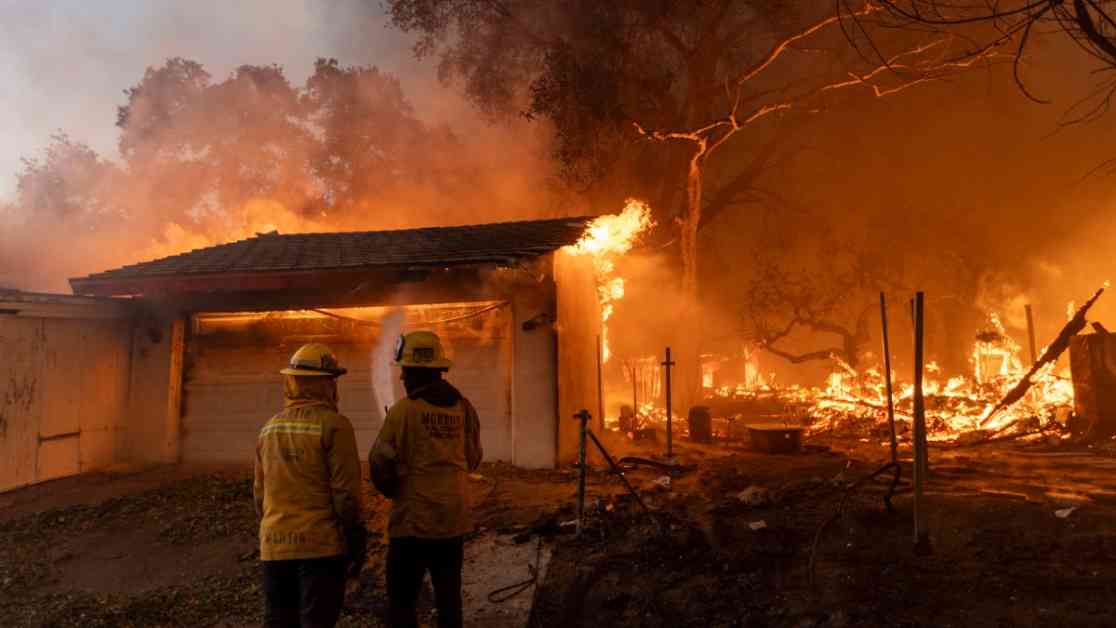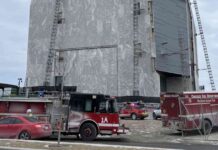Understanding the Causes of Fires in LA: Hollywood Hills, Palisades, and Eaton Fires Explained
At least four major fires were burning in Southern California Thursday morning, with as many as 100,000 residents under evacuation orders as fast-moving flames continue to burn through homes and businesses. The latest fire — the Sunset Fire, in the densely populated area of Hollywood Hills — broke out Wednesday night, threatening one of Los Angeles’ most iconic spots as firefighters battled to get three other major blazes under control.
The Sunset Fire started as officials were holding a news conference Wednesday evening to update residents on efforts to fight massive fires in Pacific Palisades and Altadena and to warn that fire danger remained high. Los Angeles Fire Department Chief Kristin Crowley made a hasty exit after announcing the new fire and soon after an evacuation order was issued.
Major Blazes Continue to Ravage Southern California
The Hollywood Walk of Fame was bustling and the streets around the TCL Chinese Theatre and Madame Tussauds were packed with stop-and-go traffic as sirens blared and low-flying helicopters flew overhead to dump water on the flames, which were only about a mile away. People toting suitcases left hotels while some onlookers walked toward the flames, recording the fire on their phones.
Within a few hours, firefighters had made major progress. Los Angeles Fire Department Capt. Erik Scott said they were able to keep the fire in check because “we hit it hard and fast, and mother nature was a little nicer to us today than she was yesterday.”
But the same can’t be said for the other major blazes burning, two of which remained zero percent contained as of Thursday morning. Nearly 2,000 homes, businesses, and other structures have been destroyed in those blazes — called the Palisades and Eaton fires, at 17,000 acres, and 10,600 acres, respectively — and the number is expected to rise.
Expert Insights on the Cause of the Fires
Southern California is experiencing its most devastating winter fires in more than four decades. Fires don’t usually blaze at this time of year, but specific ingredients have come together to defy the calendar in a fast and deadly manner.
Supersized Santa Ana winds whipping flames and embers at 100 mph, cross with the return of extreme drought, weather whiplash that grew tons of plants in downpours then record high temperatures that dried them out to make easy-to-burn fuel, and a plunging and unusual jet stream are all factors contributing to the deadly urban conflagration.
According to experts, fires have gotten faster due to a warming climate, making it easier to burn fuels when conditions are just right. The impact of wind speed on spreading flames is exponential, and there is a clear link between climate change and the more frequent dry falls and winters that provide fuel for fires.
Impact on Communities and the Environment
The Palisades Fire already is the most destructive in Los Angeles history, with at least 1,000 structures burned. Conditions are ideal for fires, and the human factor in population growth and infrastructure development also plays a role in the rapid spread and intensity of wildfires.
As Southern California continues to battle these devastating blazes, residents, officials, and experts are working tirelessly to contain the fires and protect lives and property in the face of extreme weather conditions and environmental challenges.
Let’s all take a moment to appreciate the brave firefighters, first responders, and volunteers who are risking their lives to keep communities safe and protected. Their dedication and courage in the face of such destructive wildfires are truly commendable and deserve our utmost respect and gratitude.




